It’s been 10 years since the birth of the M4/3 camera system. I got my first M4/3 (Lumix GF2) in 2010 and never looked back. Indeed, I am about to argue that during that decade M4/3 has become the best camera system both for the landscape photographer on the move and a wildlife photographer alike, hitting the sensor size sweet spot. And yet, it’s completely overlooked by the outdoor movers and shakers!
There are reasons for that. Some historical (there is a large contingent of outdoor photographers who switched to digital when it was being grafted into legacy 35mm systems). Some to do with misunderstanding of what determines digital picture quality and where the technology is. And let’s not be shy, there is some pure ‘mine is bigger than yours’.
Compared to all the other removable lens systems out there M4/3 has a whole bunch of things in its favour, here are some of them of the top of my head.
M4/3 is light on the back. My ‘complete’ outdoor camera kit, which consists of a camera, 24-80mm eq. zoom, a fisheye, 200-800mm eq. ‘bird’ lens, a full-sized tripod, spare batteries and a handful of filters weights 5.5kg. Apart from the tripod it fits inside a BYOB 10 insert – my mother-in-law goes around with a (considerably) bigger handbag than that! Now try that with a full-frame system; the equivalent ‘bird’ lens alone weights more than the whole lot and measures over 50cm.
M4/3 is light on the wallet. At £1,200 the aforementioned Leica ‘bird’ zoom is not cheap by any means, but it’s not out of the reach of us mere mortals. And that’s basically as expensive as it gets. Equivalent full-frame lenses start at ~£6,500 ... Similarly, top, professional grade, M4/3 cameras such as the Lumix G9 will set you back by ~£1,200 ... need I say more?
The M4/3 dual image stabilisation (5-axis in camera + in lens) is second to none. It means not only I can comfortably hold shots to 1/25s, but that if required I can hand-hold that 800mm eq. beast, and that is priceless.
If you want a camera that can take both excellent stills and video, the M4/3 is without a competition, and most of the lenses have been designed with this in view (i.e., zooms with constant aperture when zooming).
Ask yourself why is there such an abundance of sensor cleaning kits for full-frame cameras, but nothing for M4/3? As it happens, M4/3 comes with built-in sensor cleaning as standard. Taking pictures outdoors? Invaluable!
‘But the image quality, the bokeh ...’, I hear you say. OK, let’s talk some geekery.
Size Matters
Megapixels sell cameras, for the belief that image quality is to do with pixel count is more deeply entrenched in the psyche of the digital era photographer than anything else. Yet the reality is lot more complex, and in fact, more pixels are not necessarily better (back to that in a moment).
On its own, the MP value has only a bearing on how much the image can be enlarged. To get a good quality photographic print you need around 200 dpi (dots per inch), if you are looking for a truly bespoke work, and have a capable enough printer (a person, not a gadget), then 300 dpi. But that means an old 6MP camera is enough for an excellent print at around 10"-15" wide, while 20MP is good enough up to 17"-25" – a very few, even professional, photos will ever be printed to anything near that.
But what do I know? Here is what Colin Prior has to say on the subject of megapixels:
What do you need a 100MPs for? ... What do we need that resolution for? Nobody can answer that question! Anything more than 30MPs is total bonkers (An interview on the The Togcast Podcast, episode #26)
So, if you do the sort of photography that requires to regularly produce prints at A2 or bigger size then the M4/3 might not be a good fit, but do you? Most of us don’t, vast majority of today’s imagery is intended for digital comsumption, which puts much lesser demand on pixel density. A 27" iMac retina display has a resolution of 200 dpi, a typical consumer monitor 120 dpi, ‘4k’ means 4000 pixels wide – an 20.3MP M4/3 image exceeds all of those.
‘But lot of pixels means you can crop a lot!’ I prefer to compose my pictures on location instead, don’t you?
In contrast, the physical size of the sensor matters a great deal. M4/3 cameras have a sensor that has (a clue in the name) a 4:3 ratio, and a diagonal exactly 1/2 of a 35mm film negative (what in the digital age, to the amusement of medium and large format photographers everywhere, has come to be known ‘full frame’, FF for short). The relationship between the FF and M4/3 diagonals is referred to as a crop factor of 2.
The physical size of the sensor determines three things in particular: the total amount of light that falls on the sensor at any given light conditions, the focal length of a lens needed to achieve a given angle of view, and the perceived depth of field.
Equivalent Aperture
Because the M4/3 sensor area is a little bit over 1/4 of the FF sensor area, the total amount of light (the number of photons) falling on the sensor is ~1/4 of what would fall on a FF sensor if both lenses were set at the same f-stop, or the same amount of light that would fall on the FF sensor if its lens was closed down by 2 f-stops. This relationship is referred to as equivalent aperture.
The amount of light that falls on the sensor has bearing on noise. There is a whole field of science dedicated to the subject (signal theory), but in essence, in any real-world system that transmits information, the useful bits (signal) are always mixed with bits that should not be there (noise; think of it as the crackling of an old vinyl). The closer the size (amplitude) of the signal is to that of the noise, the more intrusive the latter becomes (quiet music, loud crackling). This relationship is described by signal-noise ratio (SNR).
In a digital sensor the amplitude of the noise is largely given by the quality of the circuitry, while the amplitude of the useful signal is given by the intensity of the light. When it’s dark, the signal is small and has to be amplified. This is where the ISO number comes in. With a digital camera the ISO number represents the amplification factor: the bigger, the more amplification. But the problem with amplification is that it increases not only the amplitude of the signal, but also of the noise.
But the important thing to understand, and I get the distinct impresion that lot photographers don’t, is that when it comes to digital, noise is not determined by the amount of light that falls on the sensor (indicated by effective aperture) but that falling on an individual pixel on the sensor. In other words, noise depends not only on the effective aperture, but also on the overall pixel count.
So, at the same f-stop a pixel on a 45MP FF sensor receives not 4x (effective aperture) but only ~1.7x the amount of light that a pixel on 20MP M4/3 sensor does, i.e., all other things being equal, the M4/3 lens needs to be opened up by less than a stop to achieve the same performance – the fact that the current generation of M4/3 cameras has stuck with sensible sensor pixel counts, whereas FF sensors are chasing ‘bonkers’ pixel densities, works hugely in the M4/3 favour.
In practical terms, the noise of the system determines two things: how quickly the image degrades when the ISO value is pushed up, and the dynamic range of the sensor (the difference between the lightest and darkest light level the sensor can capture). So what does it look the real world?
Regarding the high ISO usability it looks pretty good. The current crème de la crème of the M4/3 cameras, the Lumix G9, doesn’t show significant amounts of noise until above ISO 3200. In terms of outdoor photography this is very decent. And even my now somewhat ageing GX8 is in my experience perfectly fine at least ISO 800.
At the same time, M4/3 lenses tend to be fast. A typical zoom lens will come at f2.8, good enough to shoot any daytime landscape at ISO 100, and it gets even better with primes. The Olympus M.Zuiko fisheye opens up to f1.8, which is good enough for night time photography at ISO 100. Personally, I rarely need to set my M4/3 cameras to anything other than ISO 100, the main exception being bird photography with the big telephoto at fast shutter speeds (1/2500s or so); but even for that ISO 3200 is usually enough.
Then, of course, there is the excellent performance of current noise reduction algorithms that can be used in post-processing. In other words, it’s just like the mega pixels – in terms of low light noise the M4/3 cameras are well beyond what is necessary to take that perfect landscape image.
What about the dynamic range? The active range of the human eye is estimated to be ~10-14EV (the absolute dynamic range is about 24EV , but this is not actively usable since the eye takes a better part of an hour to fully adjust to a transition from light to darkness). A top end FF (as well as MF) sensors come bit under 15EV, while top end M4/3 cameras deliver bit over 13EV.
‘Aha!’, you say, ‘the FFs are almost 1.5 stops better!’
My answer to that is two fold: on the one hand 13 and a bit EV is more than enough in most landscape scenarios, and when it is not, it is easily remedied (either by an old fashioned graduated filter, or by that wonderful feature of modern digital cameras, exposure bracketing. On the other hand, 1.5 stop is not enough of a difference; I routinely use 3EV GND filter, which means I’d still have to do something even with a top end FF (or even MF) camera.
So to sum up, I don’t believe the ‘better image quality’ argument for FF sensors holds. It’s not that sensor size doesn’t come at a cost of quality, it does. But once the quality of the hardware gets beyond a certain point, it no longer matters, and the quality of the image comes down purely to what we do with the camera. And today’s M4/3 cameras are, in my personal view at least, well beyond that point.
Equivalent Focal Length
For a given angle of view, the focal length of the lens is proportional to the crop factor. So, if the ‘normal’ angle of view for FF sensor is created by a 50mm lens, for M4/3 the same is achieved with a 25mm lens, which would be said to be a ‘50mm equivalent’.
The big consequence of this, and the real strength of M4/3 as a system for the photographer on the move, as I already noted, is that the lenses are much smaller and lighter (not to mention cheaper). As Jim Frost once put it, ‘you don’t need a wheelbarow to carry it around’. Nothing to add to that really.
Depth of Field
While equivalent focal length is useful to compare the angle of view, two lenses of such equivalent focal length are not equivalent in other important respects. The most notable difference is the depth of field. Lenses of equivalent focal length have the same depth of field at apertures proportionate to the crop factor, i.e., the depth of field of a M4/3 25mm lens at f2.8 is the same as that of a 50mm FF lens at f5.6. In other words, M4/3 has a noticeably greater depth of field than a FF camera for the same angle of view and aperture.
The increased depth of field is the single biggest, and I think the only practically significant, difference between modern M4/3 and FF cameras; whether the M4/3 is deemed to be a good fit will depend on how much value shallow depth of field adds to one’s images.
There are photographic disciplines where a shallow depth of field is definitely a must, but personally I don’t think outdoor photography is necessarily one of them. First of all, it’s not so much of an issue with closeups, for at short distances even the M.Zuiko f1.8 fisheye will produce a decent bokeh (plus closeups can, more often than not, be done using a longer focal length). At long focal lengths this is not an issue at all, e.g., the depth of field on the Leica 100-400mm zoom is perfect for wildlife photography.
So in practical terms the depth of field only makes a noticeable difference at mid foreground distances with normal to wide angle lenses. To be specific, with an M4/3 12mm lens (24mm eq.) at f2.8 with far focus limit stretching to infinity, the near focus limit will never be more than ~3.5m. A FF 24mm lens at 2.8 can push that near limit to around 6.5m. But how much difference does this really make to me? If nothing else, if I really want that extra 3m of unfocused foreground, and I can’t achieve the desired composition at a longer focal length, I can fix that in post-processing.
In Conclusion
As far as I am concerned the M4/3 does it all. It’s a great system for outdoor photography, whether it’s landscape or wildlife, and after eight years of using it, I can’t envisage ever wanting to ‘step up’ to a full-frame system.
It’s not that I don’t understand the benefits of a bigger media, having shot thousands of pictures in years gone by on 35mm film, I do. But for vast majority of my pictures the M4/3 is the optimal system. And when it’s not? Well that’s where medium format comes in, of course. Full frame? But a relic of disposable cameras and holiday snaps from a long gone era of film. 😉
A Few Notes on M4/3 Cameras
Just a few comments on the cameras and lenses I have owned, with a random selection of pictures for illustration. Probably worth saying, the pictures have had a varied degree of post processing applied in Lightroom, but no Photoshop involved (life is too short for that).
Lumix DMC-GF2
My first M4/3 camera. Introduced in 2010 as a somewhat dumbed down successor to the hugely popular GF1, the GF2 delivered 12.1MP resolution with a dynamic range of 10.3. By today’s standards not much, but nevertheless in a combination with a 14mm pancake lens it proved to be an excellent setup for my outdoor activities. The RAW output made it amenable to decent amount of post processing, compensating somewhat for the limited dynamic range, and with little care it could produce pretty decent pictures.
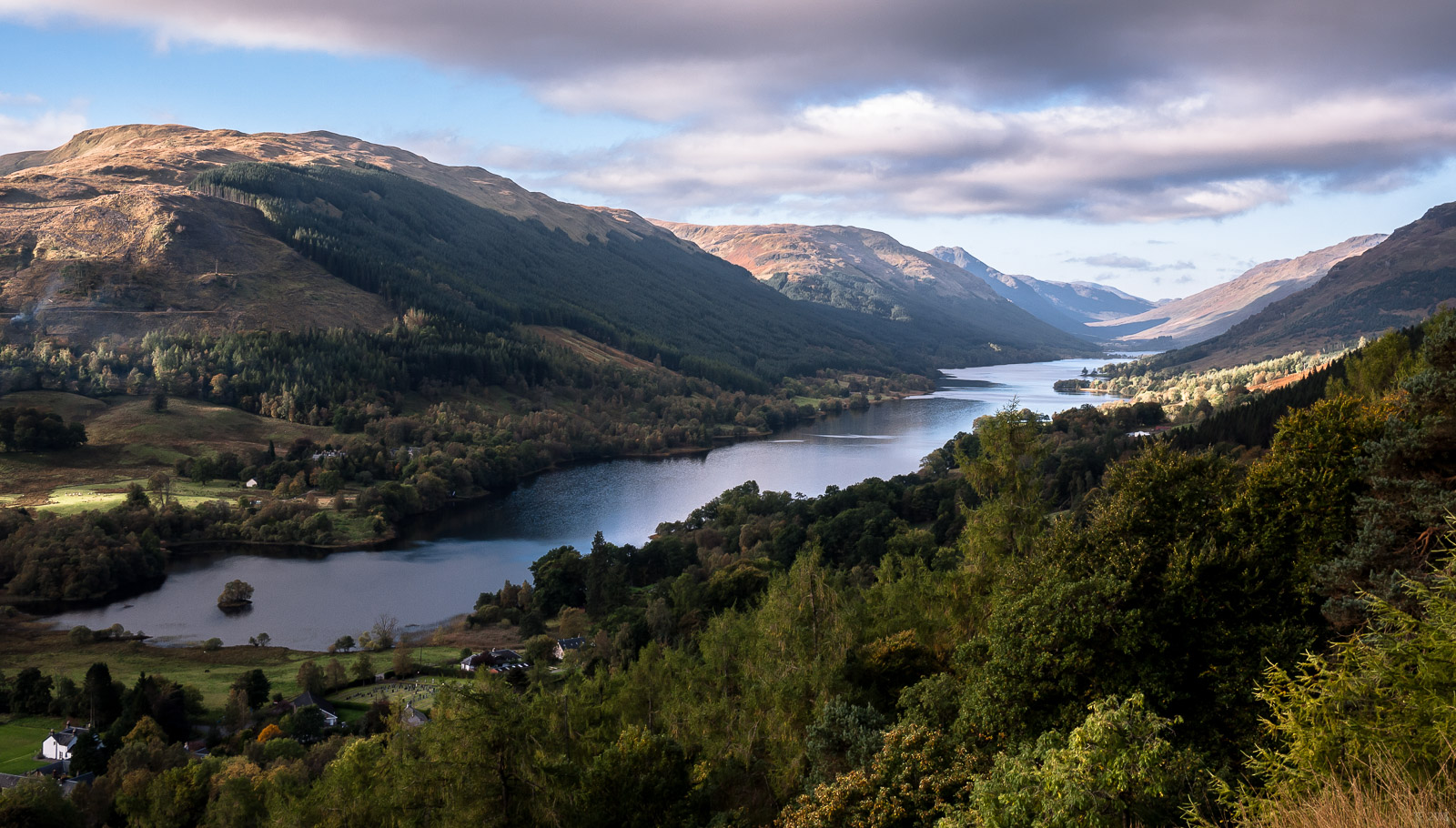 Loch Voil (Lumix DMC-GF2, Lumix G 20mm/f1.7)
Loch Voil (Lumix DMC-GF2, Lumix G 20mm/f1.7)
 Larch Tree (Lumix DMC-GF2, Lumix G 14mm/f2.5)
Larch Tree (Lumix DMC-GF2, Lumix G 14mm/f2.5)
Lumix DMC-GM5
The main limitation of the GF2 for me was that it did not have a viewfinder, only a fixed LCD screen. This made it hard to use in bright light, and also to compose images properly in general. Eventually I had enough ‘if only this was a bit to the left’ pictures to look for a replacement. The GM1 ticked all the boxes, but by the time I made up my mind (the GM1 was quite dear), its successor, GM5, came out in 2014.
To me the GM5 was a true marvel of technology. It was much smaller and much lighter than the GF2, at 260g (with the 14mm pancake lens) this was a camera I could fit into shoulder strap pouch and run with. Yet, it addressed what I thought were the main defficiencies of the GF2: it has a decent viewfinder and even some external mechanical controls, e.g., for exposure settings. And the 16MP sensor had a much improved dynamic range of 11.7 – this was a compact-like camera packing some serious punch.
In spite being four years old now, which in digital sensor technology is a lifetime, I still use the GM5, and indeed over the years it has produced some of the pictures that made me most happy. In many ways it remains the perfect outdoor camera for me. These days I usually refer to it as ‘the running camera’ on account of its size an weight, for it’s what I take when weight matters. Nevertheless, the dynamic range is enough for most outdoor photography scenarios, and with minimal post-processing the GM5 is capable of producing excellent quality prints of up to ~18" or so.
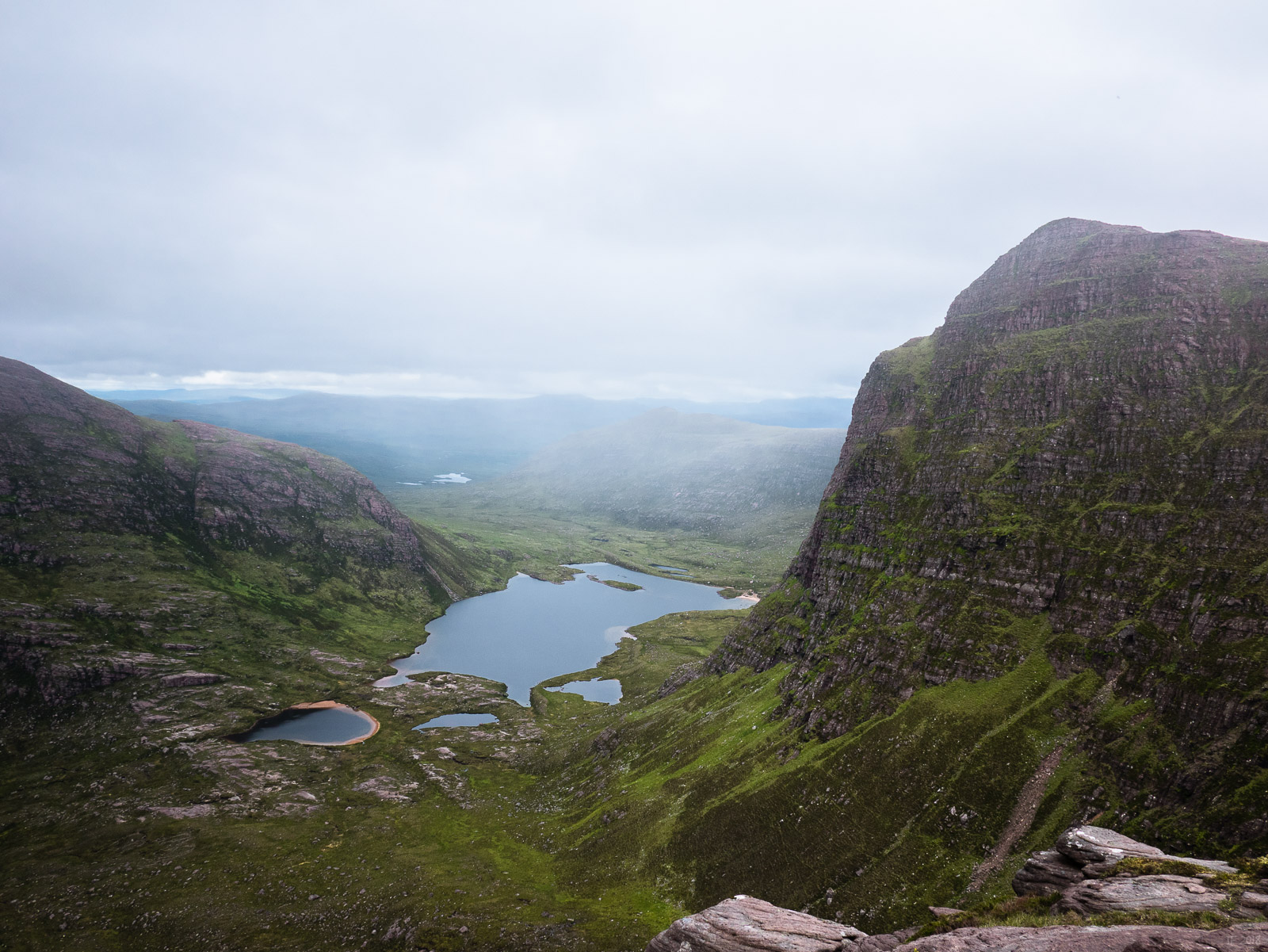 Sgurr an Fhidleir and Lochan Tuath (Lumix DMC-GM5, Lumix G 14/f2.5)
Sgurr an Fhidleir and Lochan Tuath (Lumix DMC-GM5, Lumix G 14/f2.5)
 Bynack More (Lumix DMC-G5, Lumix G 14/2.5)
Bynack More (Lumix DMC-G5, Lumix G 14/2.5)
Lumix DMC-GX8
The Lumix GX series came as the spiritual successor of the GF1, a class of camera aimed at the serious amateur. The GX8, introduced in 2015, is arguably a pinnacle of that series (for reasons only known to Panasonic, the GX9 is a dumbed down version of the GX8, lacking some of the things that make the GX8 so great, not least the mechanical controls and weatherproofing).
The GX8 has a well thought out external controls, including a dedicated EV Compensation dial big enough to work in winter gloves, decent resolution tilting viewfinder, a tilting screen, is weatherproof, and all in all a pleasure to use. The in-body 5-axis stabilisation works extremely well, and the 20.3MP sensor has an excellent dynamic range of 12.6 – more often than not, the GX8 produces great looking images straight out the camera.
The main limitation of the GX8 is the presence of an anti-aliasing filter on the sensor, which results in some loss of sharpness in fine detail. Nevertheless it produces excellent prints up to ~24".
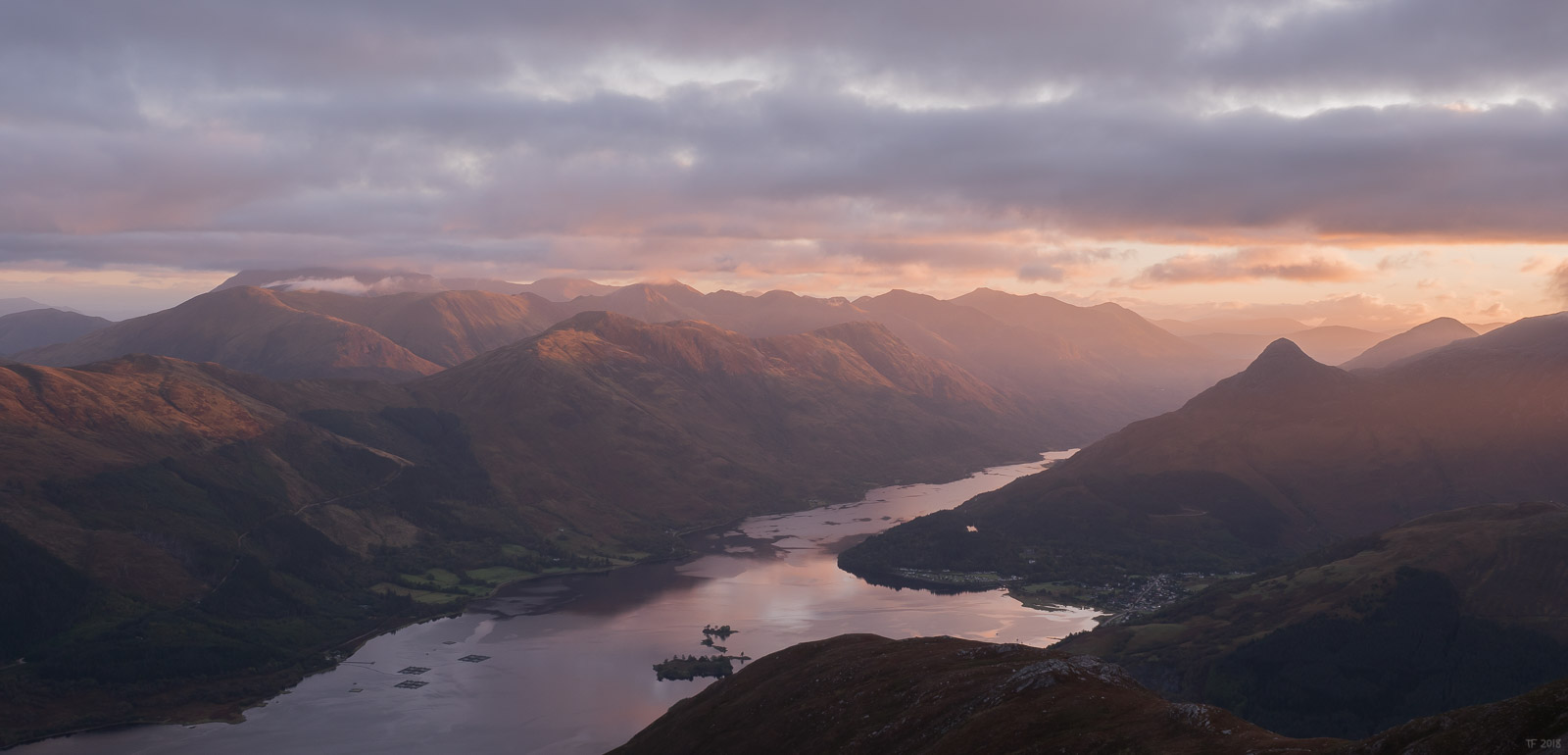 Loch Leven (Lumix DMC-GX8, Olympus M.12-40mm / f2.8)
Loch Leven (Lumix DMC-GX8, Olympus M.12-40mm / f2.8)
 Bealach Bhearnais (Lumix DMC-GX8, Olympus M.12-40mm / f2.8; hand-held at ISO 800)
Bealach Bhearnais (Lumix DMC-GX8, Olympus M.12-40mm / f2.8; hand-held at ISO 800)
Lumix GC-G9
The Lumix G series is aimed at the professional user. The much improved 20.3MP sensor has a dynamic range of over 13EV, no AA filter, and produces very sharp images that hold their own even alongside today’s best FF cameras. Like the GX8, the G9 is weatherproof, but the body is somewhat bigger and heavier (mostly due to an enlarged hand grip).
Some of the nice features of the GX8 are missing (no dedicated EV compensation dial, the viewfinder doesn’t tilt), but the number of customisable buttons is greater, and the little on-camera LCD is a nice touch. The viewfinder resolution has gone up, its image very bright and clear. The 5-axis stabilisation has been further improved, there is a sensor shifting high resolution mode, delivering 80MP (cool, but awkward in real life), and 4k / 6k mode for shooting stills.
I haven’t had the G9 for long, but the step up from the GX8 is palpable; while the GX8 is a contender for a serious use camera, the G9 is that camera without a question.
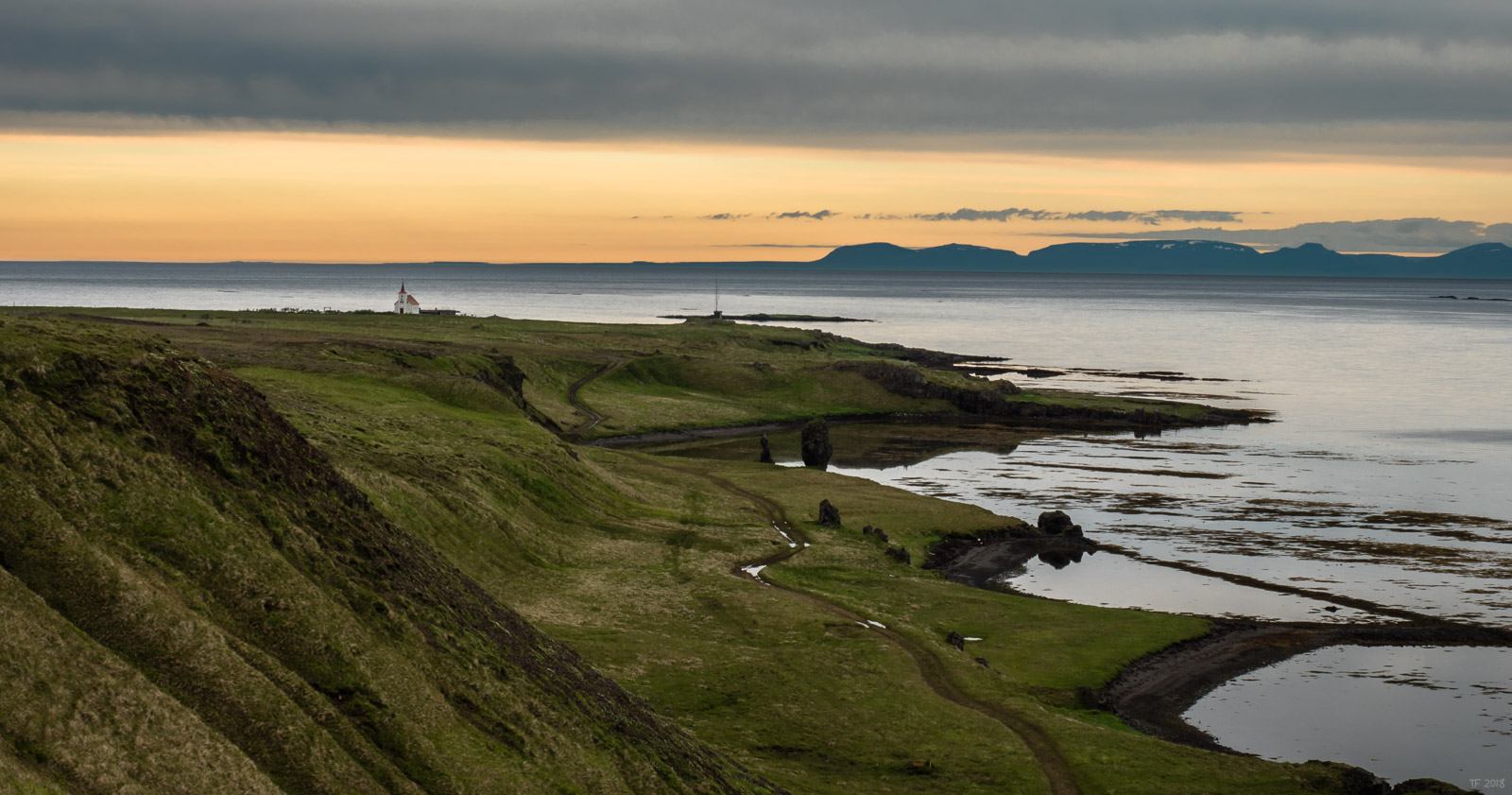 Kolla, Iceland (Lumix DC-G9, Olympus M.12-40mm / f2.8)
Kolla, Iceland (Lumix DC-G9, Olympus M.12-40mm / f2.8)
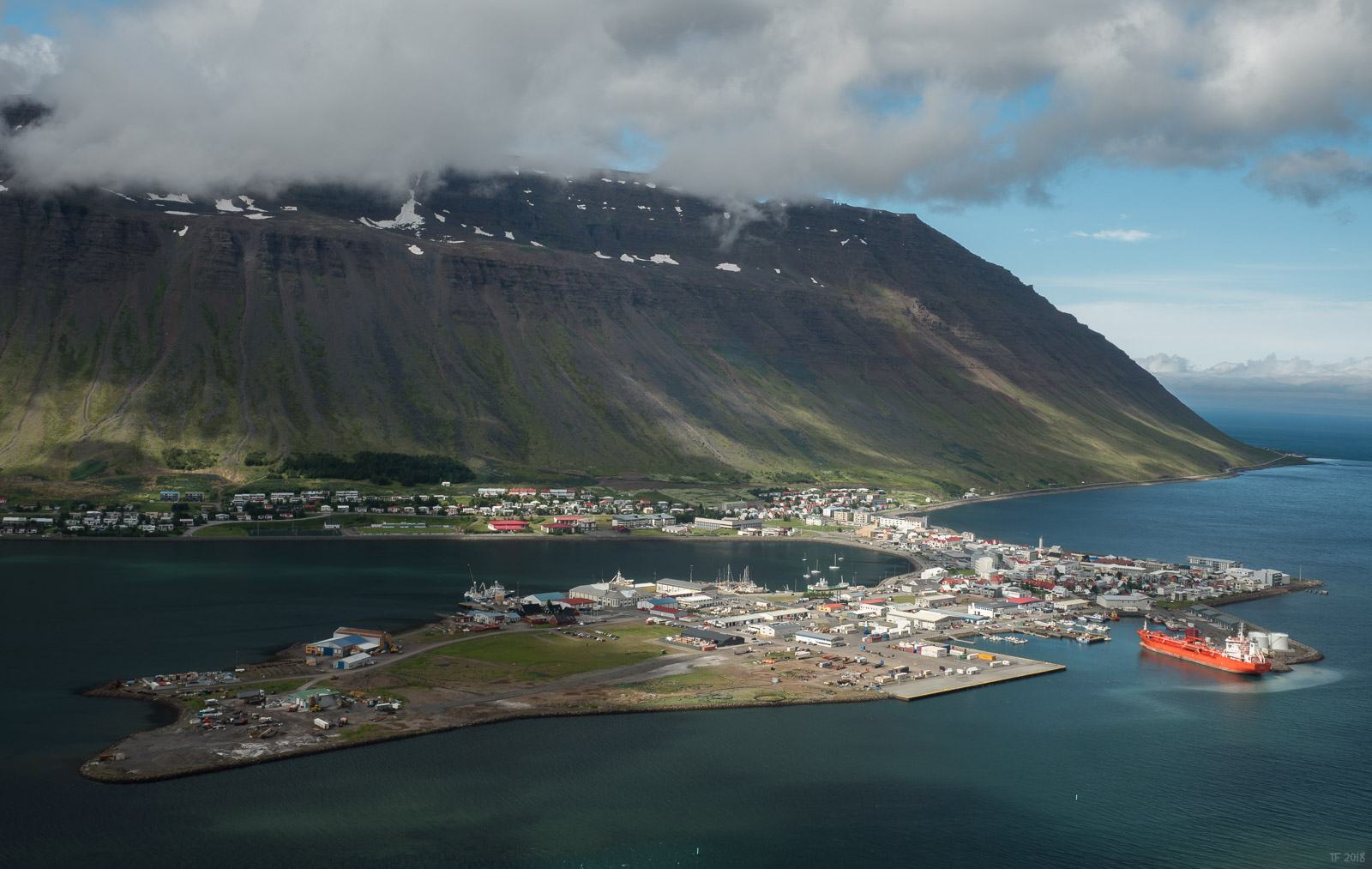 Ísafjörður, Iceland (Lumix DC-G9, Olympus M.12-40mm / f2.8)
Ísafjörður, Iceland (Lumix DC-G9, Olympus M.12-40mm / f2.8)
A Few Notes on Lenses
Over the years, I have accumulated a collection of M4/3 lenses, but the ones I most often use are the following.
Lumix H-H014 14mm Pancake
When weight really matters, this is the sole lens I’ll pack, together with the GM5. At f2.5 it is reasonably fast, light, and very low profile.
Olympus M.Zuiko Digital ED Pro 12-40mm
This is my default lens, combined with either the GX8 or G9. It is weatherproof, f2.8, constant aperture while zooming (great for videos), and, as the whole M.Zuiko series, of excellent optical quality.
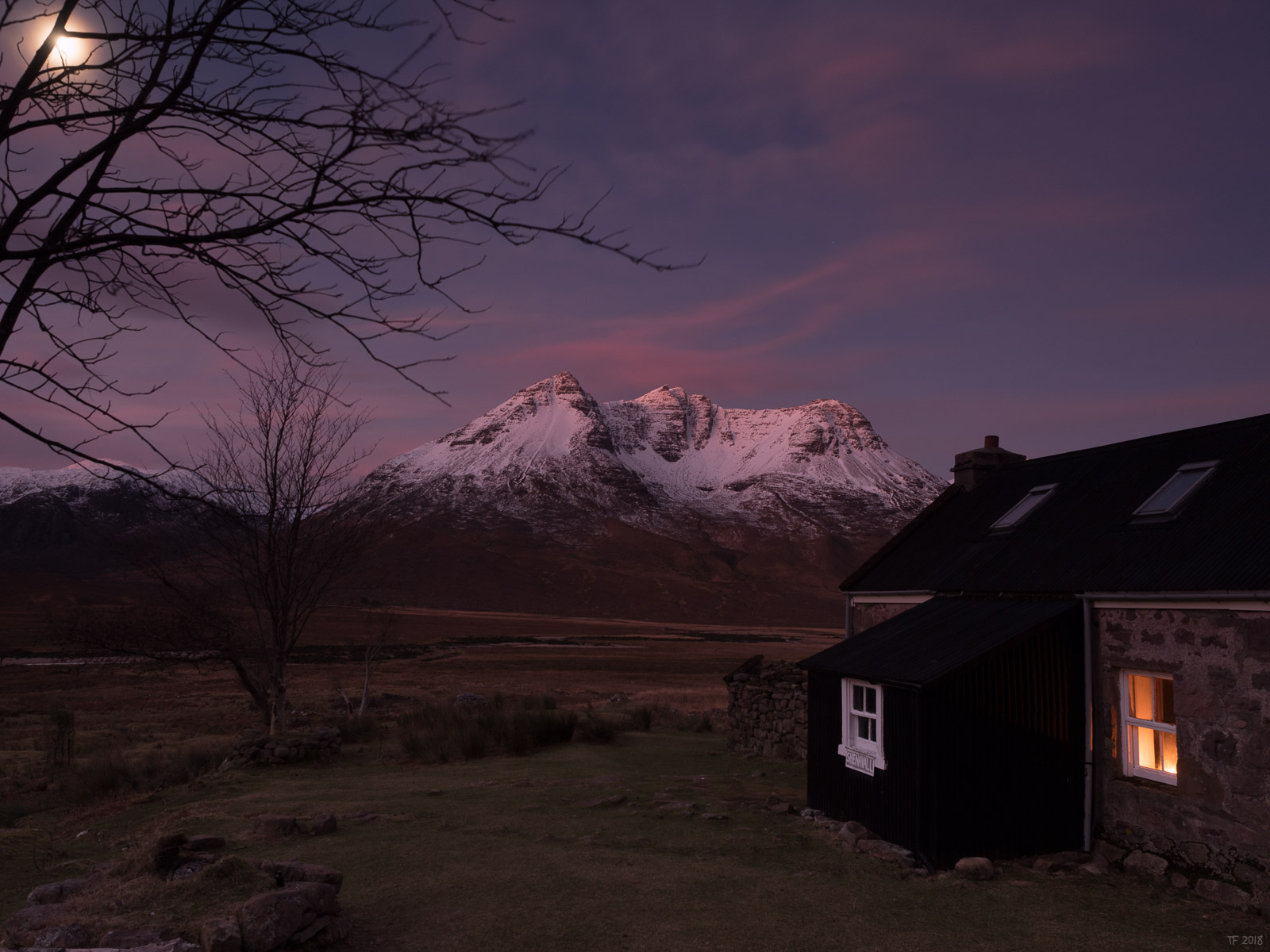 Shenavall (DMC-GX8, Olympus M.12-40mm / f2.8)
Shenavall (DMC-GX8, Olympus M.12-40mm / f2.8)
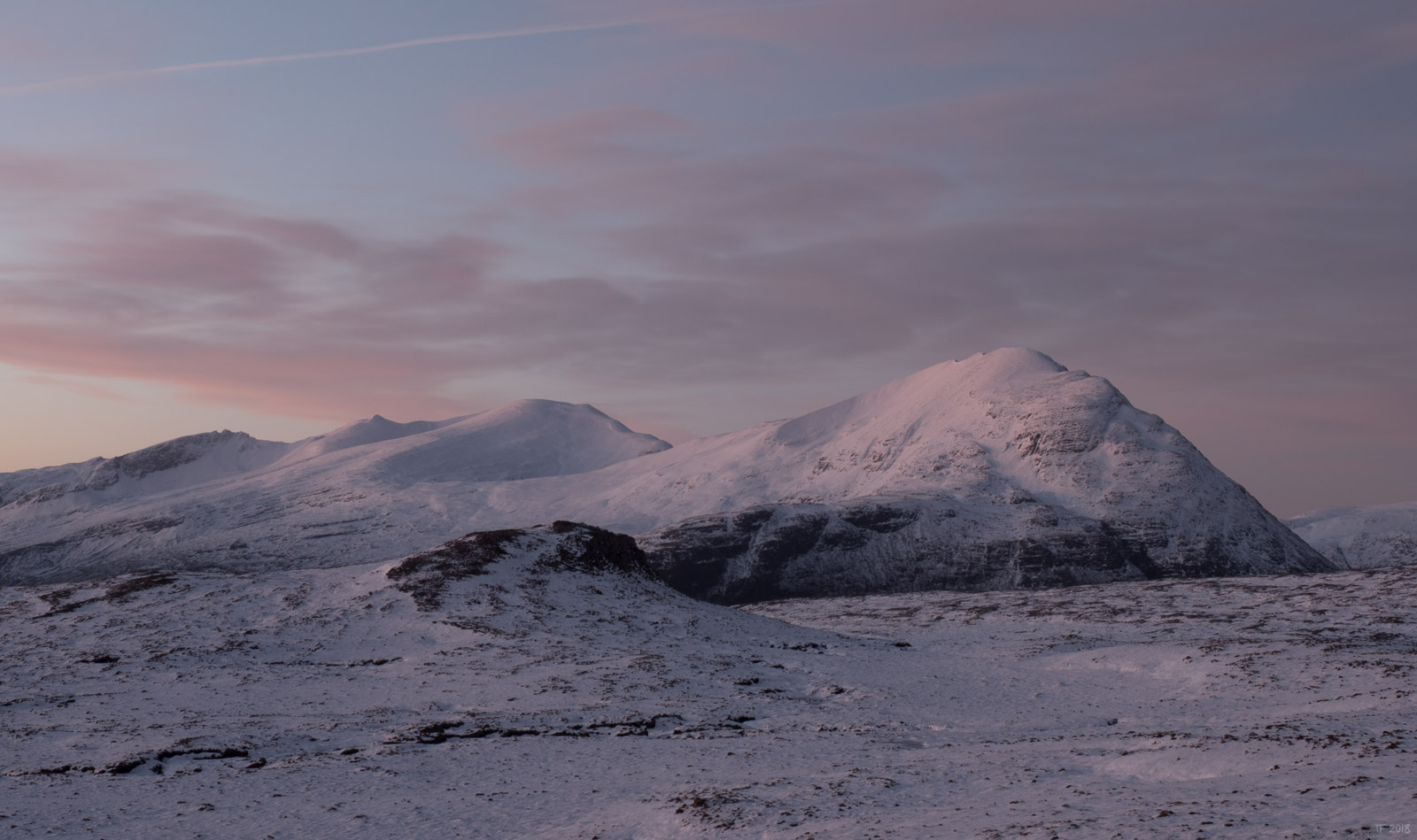 Beinn a'Chlaidheimh (DMC-GX8, Olympus M.12-40mm / f2.8)
Beinn a'Chlaidheimh (DMC-GX8, Olympus M.12-40mm / f2.8)
Olympus M.Zuiko Digital ED Pro 8mm Fisheye
A true, 180 degree, fisheye. At f1.8, this is a great lens for both night time photography and daytime landscapes.
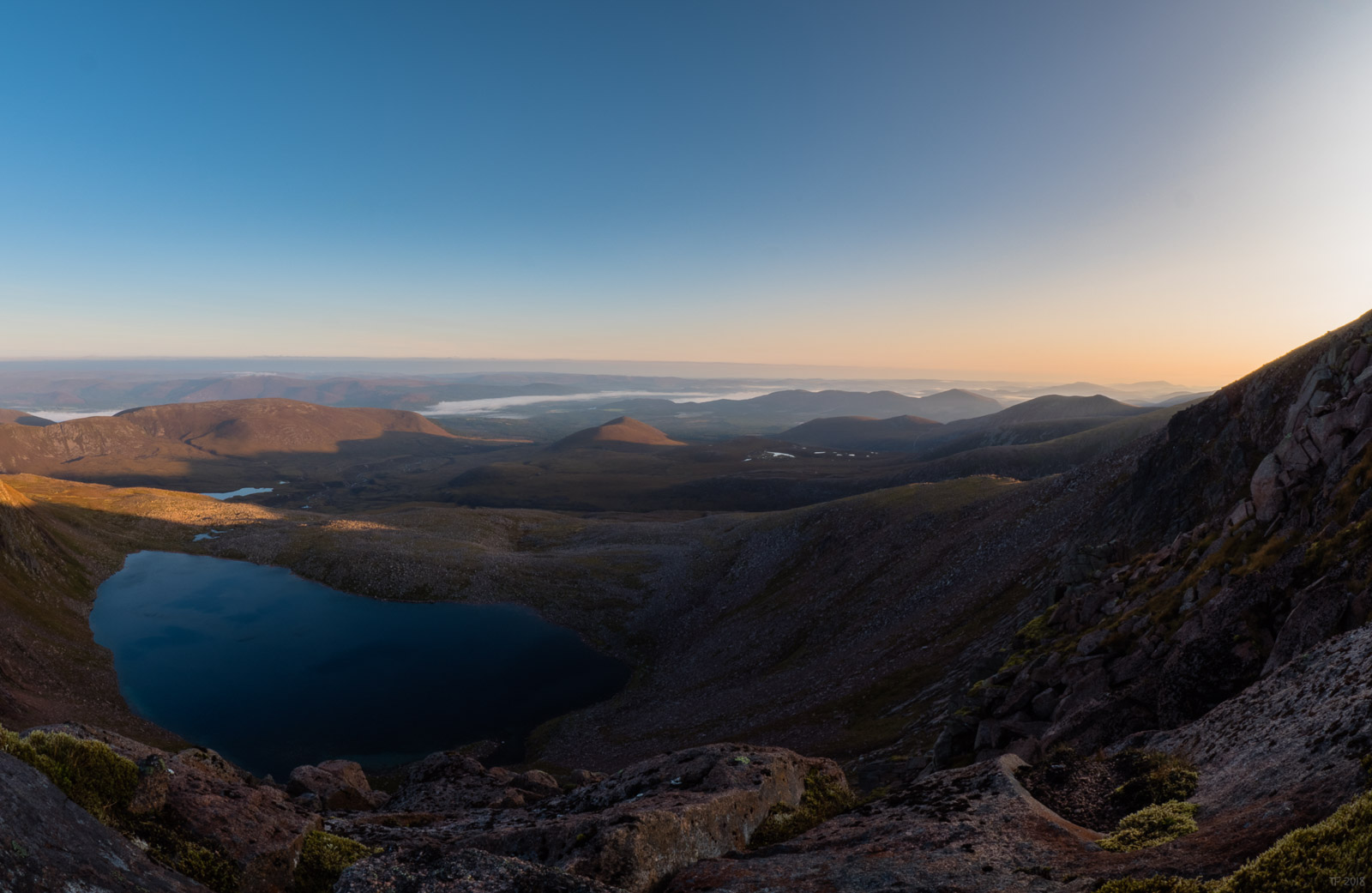 Lochain Coire an Lochain, Breariach (DMC-GX8, Olympus M.8mm / f1.8; exposure bracketted)
Lochain Coire an Lochain, Breariach (DMC-GX8, Olympus M.8mm / f1.8; exposure bracketted)
 Bealach Beinn an Eoin (Lumix DC-G9, Olympus M.8mm / f1.8)
Bealach Beinn an Eoin (Lumix DC-G9, Olympus M.8mm / f1.8)
Leica DG Vario Elmar 100-400mm Zoom
The aforementioned ‘bird’ lens, brilliant for wildlife photography. F4-6.3, in-lens image stabilisation, excellent optical quality. At 1kg, not the lightest but, more often than not, worth it.
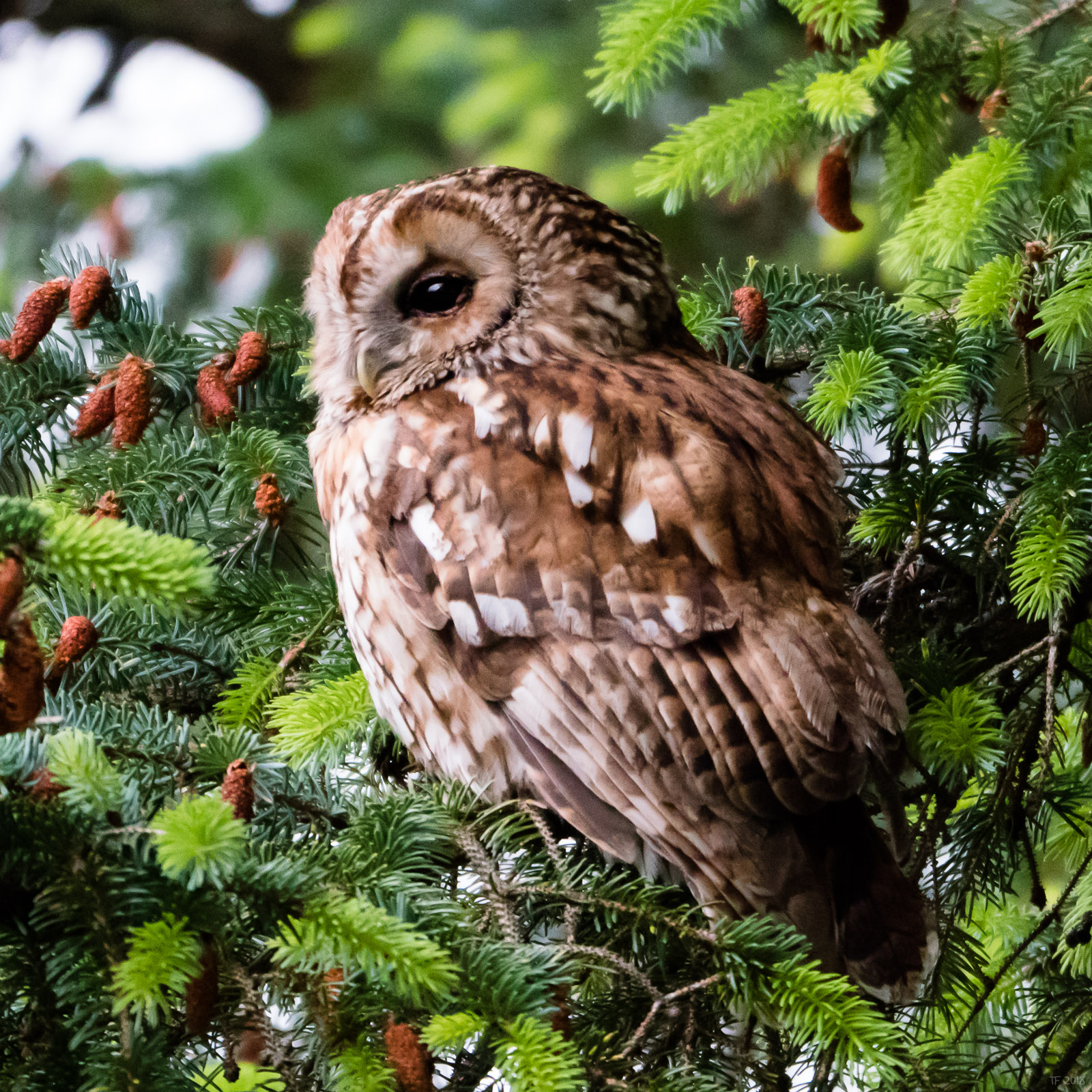 Tawny Owl (DMC GX8, Leica DG 100-400 / f4.0-6.3; shot at dusk from a monopod at ISO 6400, with noise cleaned up in post processing)
Tawny Owl (DMC GX8, Leica DG 100-400 / f4.0-6.3; shot at dusk from a monopod at ISO 6400, with noise cleaned up in post processing)
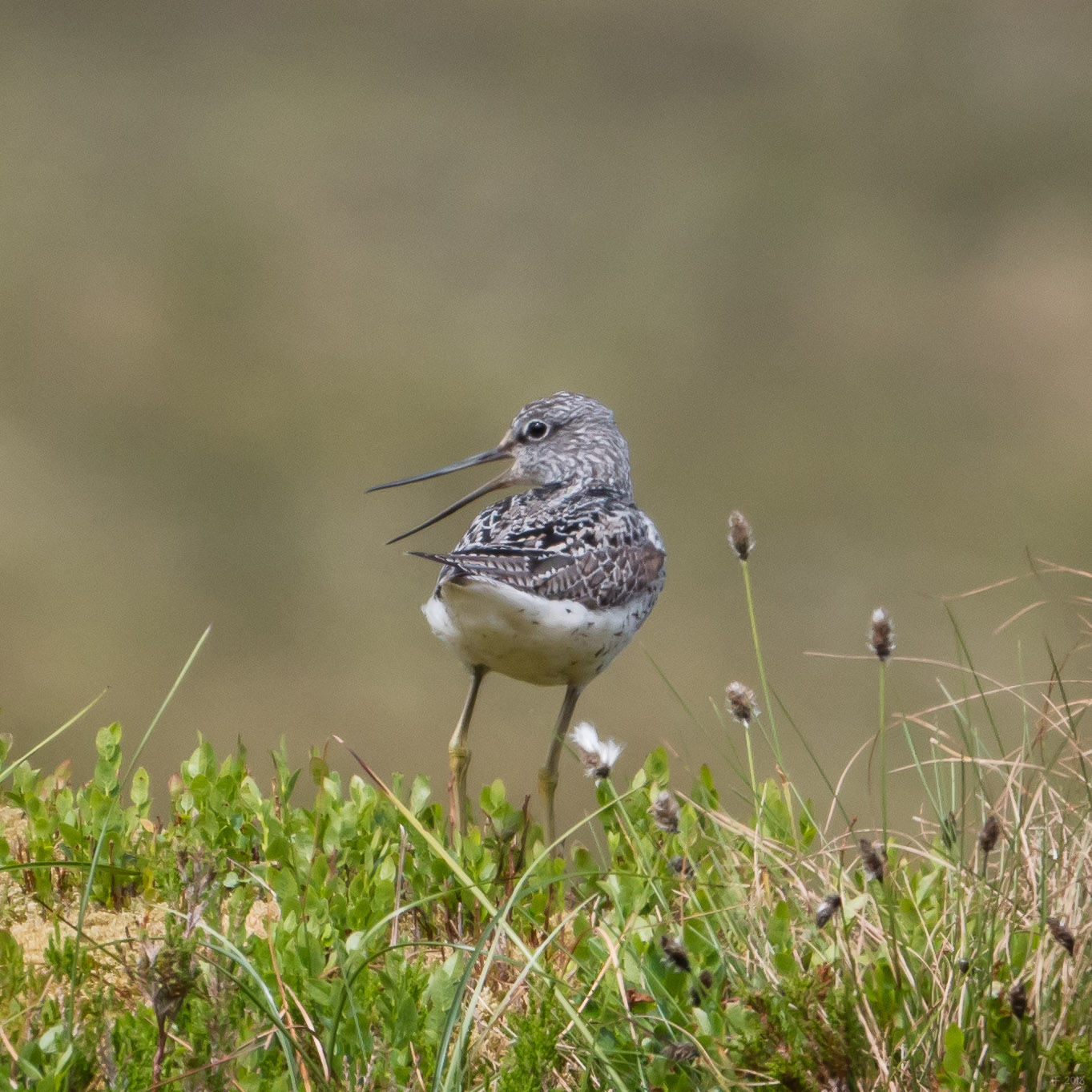 Greenshank (Lumix DC-G9, Leica DG 100-400 / f4.0-63; hand-held at ISO 400)
Greenshank (Lumix DC-G9, Leica DG 100-400 / f4.0-63; hand-held at ISO 400)